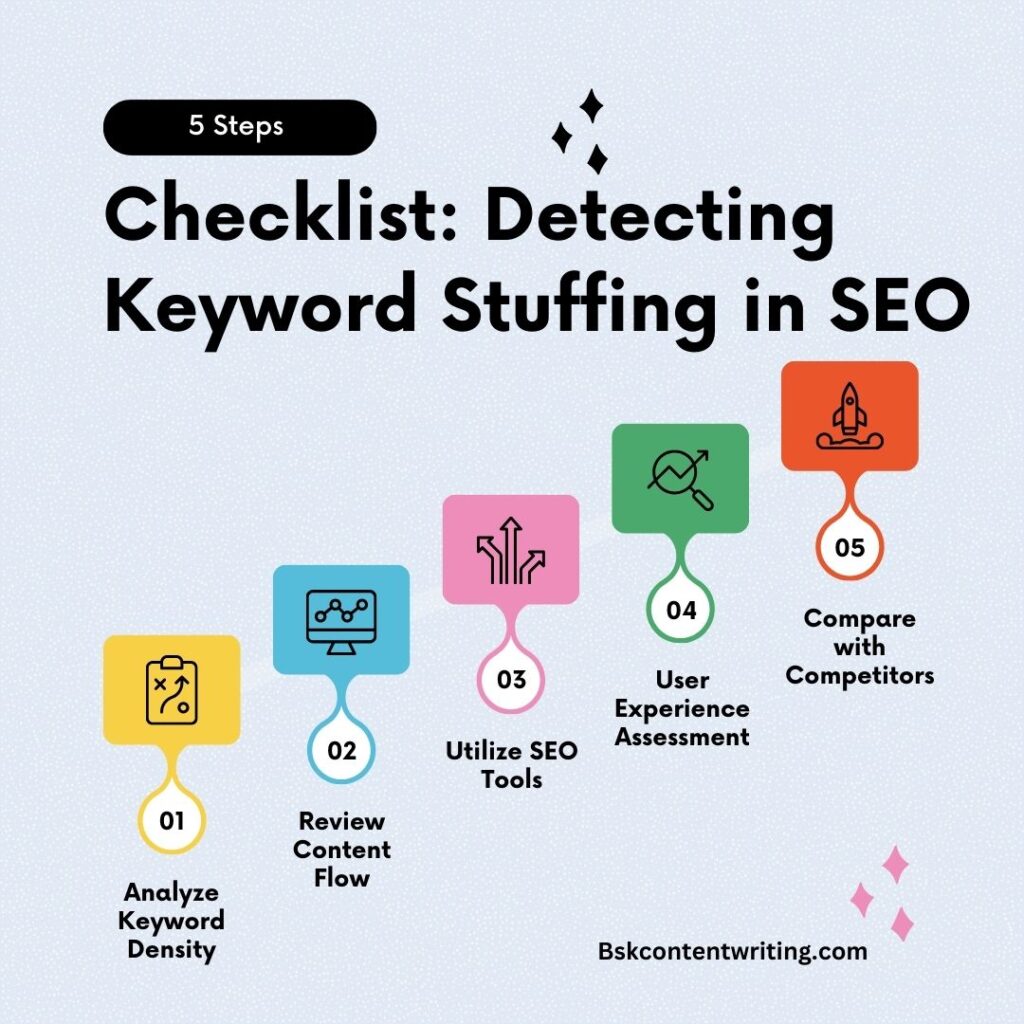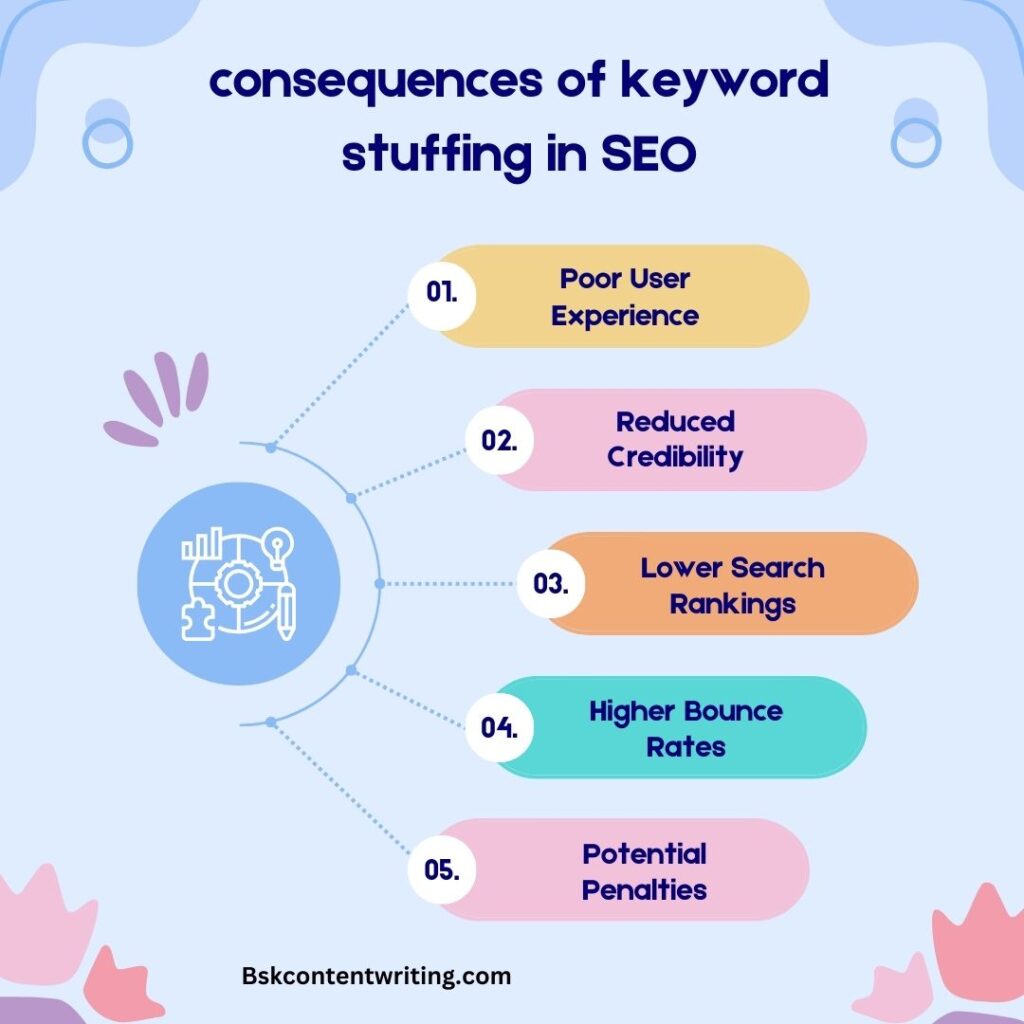
Introduction
To start, let’s uncover a term that affects how websites appear in online searches: Keyword Stuffing in SEO. It’s when people use too many keywords on a webpage, thinking it will make their site show up more in search results. Imagine trying to cram too many pieces into a puzzle – it doesn’t make the picture better, just messy.
Why Keywords Matter in SEO
Keywords act like a map for search engines. When you type something into a search engine, those words are like a guide that helps find relevant websites. This is the core of SEO (Search Engine Optimization), which helps your website get noticed online. Without keywords, it’s like trying to find one specific item in a big, messy room.
Why We Wrote This Article
This article aims to explain keyword stuffing in SEO. We want to make it clear what it is, why some people use it, and why it’s not a good idea. By the end, you’ll understand keyword stuffing, why search engines dislike it, and how to improve your website’s search ranking without resorting to this strategy. Let’s unravel the mystery of Keyword Stuffing in SEO together.
The Evolution of SEO
Early Days of SEO
In the early days of the internet, SEO (Search Engine Optimization) was like a new frontier. People were trying to figure out how to get their websites noticed. They did things like using the same keyword repeatedly, even if it didn’t quite fit, hoping it would catch search engines’ attention. It was like shouting in a noisy room and hoping someone would hear you.
The Evolution of SEO- Early Days of SEO
| Aspect | Data |
| Time Period | Late 1990s to early 2000s |
| Main Search Engines | – Google (founded in 1998) – Yahoo – AltaVista – Lycos |
| SEO Awareness | Limited understanding and awareness of SEO concepts |
| SEO Techniques | – Keyword stuffing – Hidden text – Meta keyword tags |
| Keyword Usage | Heavy reliance on single keywords and keyword density |
| Content Quality | Often thin, low-quality content |
| Backlinks | Significance of backlinks recognized but exploited |
| User Experience | Less emphasis on user experience |
| SEO Tools | Limited availability of SEO tools |
| Search Engine Updates | Frequent algorithm changes and updates |
| Competitiveness | Less competition in the SEO field |
| Metrics and Analytics | Limited data and analytics for SEO performance tracking |
| Black Hat SEO | Widespread use of Black Hat SEO techniques |
The Rise of Keyword Optimization
As search engines got smarter, they started looking for more than just a bunch of keywords. They wanted to see if websites had useful and relevant information. So, the focus shifted to using keywords in a way that made sense to readers. It was like learning to talk to search engines in a way they understood, using keywords as part of a natural conversation instead of just repeating them.
Algorithm Updates and Fighting Keyword Stuffing in SEO
Search engines kept getting better at finding the best results for users. They got better at spotting websites that tried to cheat the system with things like Keyword Stuffing in SEO. It was like search engines learning to tell the difference between a genuine recommendation and someone just trying to trick them.
| Algorithm Name | Release Year | Main Purpose | Notable Impact |
| Google Panda | 2011 | Targeted low-quality content | Penalized content farms and low-quality websites. Emphasized the importance of high-quality content. |
| Google Penguin | 2012 | Targeted spammy backlinks | Penalized websites with unnatural or spammy backlink profiles. Encouraged the use of high-quality backlinks. |
| Google Hummingbird | 2013 | Improved semantic search | Introduced a better understanding of user intent and context in search queries. Affected keyword optimization. |
| Google RankBrain | 2015 | Enhanced search results | Utilized machine learning to improve search results and understand complex search queries better. |
| Google Mobile-Friendly Update | 2015 | Promoted mobile-friendly websites | Prioritized mobile-responsive websites in mobile search results. |
| Google BERT | 2019 | Improved language understanding | Better comprehension of context and context-dependent search queries. Affected long-tail keyword optimization. |
To stay on top, website owners had to change their tactics. Keyword stuffing became less effective, and the focus shifted to creating valuable, user-friendly content. The battle against spammy practices continues, with search engines working hard to give users the most helpful search results.
What is Keyword Stuffing in SEO?
Definition and Explanation
Let’s uncover what Keyword Stuffing in SEO really means. It’s when people go a bit overboard using specific words or phrases on a webpage, thinking it will make their site show up higher in search results. But here’s the catch – it’s not about using keywords wisely; it’s about using them too much, like wearing too many clothes at once. It might sound like a good idea, but in the world of SEO, it’s a big no-no.
Examples of Keyword Stuffing
To make it clearer, here are some real-life examples of Keyword Stuffing in SEO. Imagine a website that sells shoes. Instead of giving you helpful information about the shoes, they keep repeating words like “best shoes,” “cheap shoes,” and “buy shoes” in a way that doesn’t sound natural. It’s like trying to talk to someone by saying the same word again and again – it’s annoying, and it doesn’t work well in SEO.
Why Keyword Stuffing is Bad
You might wonder why keyword stuffing is such a bad idea. Well, search engines are pretty smart nowadays. They can tell when a webpage is trying to trick them with keyword stuffing. Instead of rewarding that page with a high ranking, they might do the opposite – lower its position or even penalize it. Plus, it’s not a good experience for people who visit your website. Nobody likes reading content that feels repetitive. So, in short, Keyword Stuffing in SEO won’t help your website; it might actually harm it. It’s better to avoid it and focus on creating natural and valuable content.
The History of Keyword Stuffing in SEO
Early SEO Tricks
Picture a time when the internet was still growing, and people were figuring out how to get noticed online. Back then, some website owners used a trick called Keyword Stuffing in SEO. They repeated certain words over and over, thinking it would help their site show up better in search results. It was like trying to win a game by using the same move repeatedly.
| Aspect | Data |
| Keyword Stuffing | – Excessive use of keywords within web content |
| Meta Keywords | – Widespread use of meta keyword tags in HTML |
| Hidden Text | – Hiding keywords by making text the same color as the background |
| Doorway Pages | – Creation of doorway pages stuffed with keywords to manipulate rankings |
| Link Farming | – Building networks of low-quality, reciprocal links for ranking purposes |
| Thin and Low-Quality Content | – Emphasis on quantity over quality of content |
| Lack of User Focus | – Minimal consideration of user experience and engagement |
| Search Engine Dominance | – Few dominant search engines like Yahoo, AltaVista, and Lycos |
| Algorithm Simplicity | – Early search engine algorithms were less sophisticated and easier to manipulate |
How It Affected Search Rankings
This trick worked for a little while. Websites that stuffed keywords saw themselves at the top of search results. But it didn’t last long because search engines got smarter. They realized that these websites weren’t offering useful information; they were just repeating words. So, they changed the rules.
The Punishment for Keyword Stuffing
Search engines started penalizing websites that used Keyword Stuffing in SEO. It was like referees in sports giving yellow cards for unfair play. Websites that continued to stuff keywords faced consequences, like lower rankings or even disappearing from search results. It was a tough lesson, but it taught website owners that SEO is about good content, not shortcuts. This history reminds us that quick tricks in SEO don’t lead to long-term success.
Modern SEO Best Practices

User-Friendly SEO
In the digital world today, SEO has changed. It’s not about trying to trick search engines anymore. Instead, it’s all about making the internet a better place for people. This approach is called User-Friendly SEO. It means focusing on what users want and need when they visit your website. It’s like putting the user’s needs first, like offering someone a comfortable chair to sit in.
The Importance of Good Content
Today, the most important thing in SEO is having good content. Search engines are smart and can tell if your content is helpful and interesting. So, it’s crucial to create content that genuinely helps and interests your visitors. It’s like serving a delicious, nutritious meal instead of just giving people empty snacks. Your content should provide answers and valuable information to the people who visit your site.
Using Keywords the Right Way
Keywords still matter in SEO, but how you use them has changed. Ethical Keyword Optimization means using keywords naturally and in context, so they fit naturally into your content. It’s like adding just the right amount of spice to a recipe to make it taste better, instead of using too much and ruining the dish. This approach helps search engines understand your content and keeps it reader-friendly.
In today’s SEO world, success comes from making the internet a better place for users, providing valuable content, and using keywords in a way that makes sense. By following these modern SEO practices, your website can rank well and offer real value to your audience.
Detecting Keyword Stuffing in SEO

Ways to Spot Keyword Stuffing
It’s important to catch Keyword Stuffing in SEO to keep your website in good shape and follow search engine rules. There are tools and methods to help with this. Online tools and experts can check your website to find any keyword stuffing. Think of them as detectives investigating a case.
Checking How Often Keywords Are Used
Another way to find Keyword Stuffing in SEO is by looking at how often specific words are used compared to the total number of words in your content. If a word appears too many times, it could be a sign of keyword stuffing. It’s like tasting a dish and realizing that one spice is too strong – it doesn’t taste right.
Signs that Give It Away
You can also watch out for some common signs of Keyword Stuffing in SEO. These include content that seems repetitive or doesn’t match the main topic. Sometimes, keywords are forced into places where they don’t fit naturally, making the text sound strange. If you see lots of keywords in meta tags, headers, or alt text for images, that’s a red flag too. It’s like noticing something odd that makes you think there might be a problem.
By using these tools and keeping an eye out for signs of keyword stuffing, website owners and SEO experts can make sure their content is good quality and won’t get penalized by search engines.
Consequences of Keyword Stuffing in SEO

How It Affects Your Ranking
When you use too much Keyword Stuffing in SEO, it’s like playing a game and cheating. Search engines like Google want to show people the best websites, and they don’t like cheaters. So, if they catch you stuffing keywords, they can lower your website’s rank. It’s similar to a sports team losing points for breaking the rules – your website will be harder to find in search results.
Why Users Won’t Like It
Keyword stuffing doesn’t just upset search engines; it also annoys the people who visit your website. When your content is full of keywords, it sounds strange and spammy. Visitors might leave your site because they can’t understand or enjoy what they’re reading. It’s like going to a restaurant with a confusing menu – customers will go somewhere else for a better experience.
Getting Punished by Search Engines
Search engines take keyword stuffing seriously because it messes up their job of showing good results. So, they might give your website a penalty. This could mean your site drops in search results or even disappears from them. It’s a bit like getting a fine for breaking the law – except here, the fine is losing visitors, trust, and money.
In short, keyword stuffing is a risky move. It can hurt your website’s ranking, upset users, and lead to penalties from search engines. To do better, focus on making your content useful and enjoyable, following the rules that search engines set.
Avoiding Keyword Stuffing in SEO

How to Use Keywords the Right Way
To avoid falling into the trap of Keyword Stuffing in SEO, you should use keywords ethically. Instead of stuffing your content with too many keywords, use them thoughtfully. Find keywords that make sense for your topic and naturally include them in your writing. It’s like adding just the right amount of seasoning to a dish to make it taste great without overwhelming it.
Finding a Balance between Keywords and What People Like
It’s important to find a balance between keywords and making sure your content is enjoyable for your readers. Your main goal should be to provide helpful content that people like to read. Use keywords to guide search engines and readers, but don’t overdo it. Make sure your content flows well, reads easily, and gives your readers what they want. Think of it like making a store a nice place to shop, where customers feel good about their experience.
Using Natural Language
Write in a way that sounds natural. Instead of forcing keywords into your writing, write like you’re having a normal conversation. Think about how people talk and search for things online. Use keywords in a way that fits how people naturally speak. This not only helps with search engines but also makes your content more interesting and relatable. It’s like having a friendly chat instead of giving a rehearsed speech.
By following these simple strategies, you can make your content better for both search engines and readers. Avoiding keyword stuffing is not only the right thing to do but also helps your website do well in SEO in the long run.
Summing It Up
To sum it all up about Keyword Stuffing in SEO, here are the important things to remember:
· Keyword Stuffing in SEO means using too many keywords on a webpage to trick search engines.
· It can lead to bad things like lower search rankings, making your website hard to use, and getting in trouble with search engines.
· Today, doing SEO the right way means creating good content and using keywords in a friendly, natural way.
Why Good SEO Matters
Doing SEO the right way is really important. As search engines get smarter, using tricks like keyword stuffing doesn’t work anymore. It’s all about having good content that people like, and following the rules.
What’s Next for SEO and Keywords
The future of SEO and keywords is exciting. Search engines will keep getting better at understanding how people talk and what they want. This means websites that have helpful content and make users happy will do well. Plus, things like voice search and making websites work great on phones will be important.
In the end, we’ve learned that keyword stuffing is a bad idea, and ethical SEO is the way to go. By keeping up with what’s happening in SEO and giving people great content, websites can stay successful in the online world that’s always changing.

